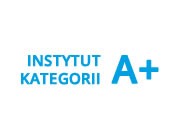Suslin's lemma for rings containing an infinite field
Volume 146 / 2017
Abstract
A well-known lemma of Suslin says that for a commutative ring ${\bf A}$, if $^{\rm t}(v_1,\ldots ,v_n) \in {\bf A}[X]^{n\times 1}$ is unimodular where $v_1$ is monic of degree $d$ and $n\geq 3$, then there exist $\gamma _1,\ldots ,\gamma _{\ell } \in {\rm E}_{n-1}({\bf A}[X])$ such that, denoting by $w_i$ the first coordinate of $\gamma _i {^{\rm t}(}v_2,\ldots ,v_n)$, we have $$\langle {{\rm Res}_X(v_1, w_1), \ldots , {\rm Res}_X (v_1, w_{\ell })}\rangle = {\bf A}.$$
This lemma played a central role in Suslin’s resolution of Serre’s conjecture. In case ${\bf A}$ contains a set $E = \{y_0,\ldots ,y_{(n-2)d}\}$ such that $y_i -y_j \in {\bf A}^{\times }$ for $i \not =j$, we prove that the $\gamma _i$’s can simply correspond to the elementary operations $L_1 \rightarrow L_1 + \sum _{j=2}^{n-1} y_i^{j-2} L_j$, $0 \leq i \leq (n -2) d$. These efficient elementary operations enable us to give a new and simple algorithm (for the Quillen–Suslin theorem) for reducing unimodular rows with entries in ${\bf K}[X_1,\ldots ,X_k]$ to $^{\rm t}(1,0,\ldots ,0)$, using elementary operations in case ${\bf K}$ is an infinite field. This work generalizes a previous paper by Lombardi and the second author which corresponds to the particular case $n = 3$.









